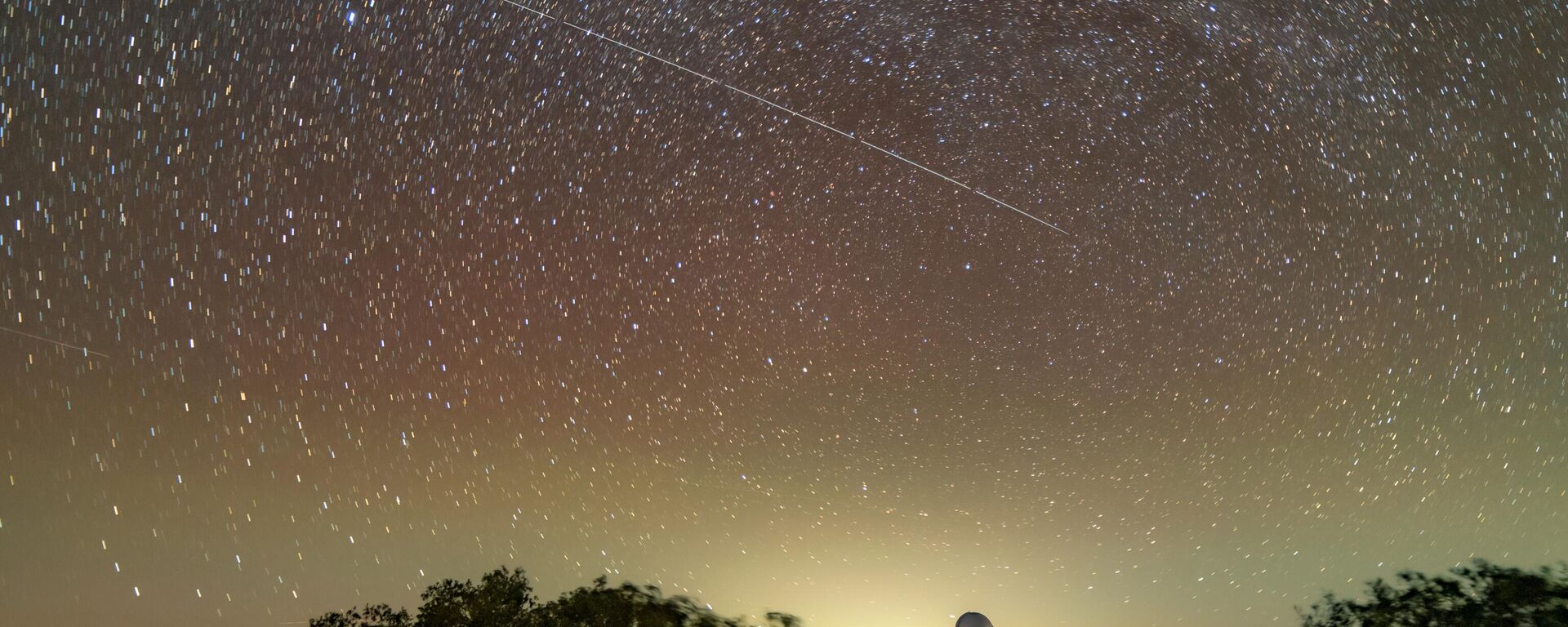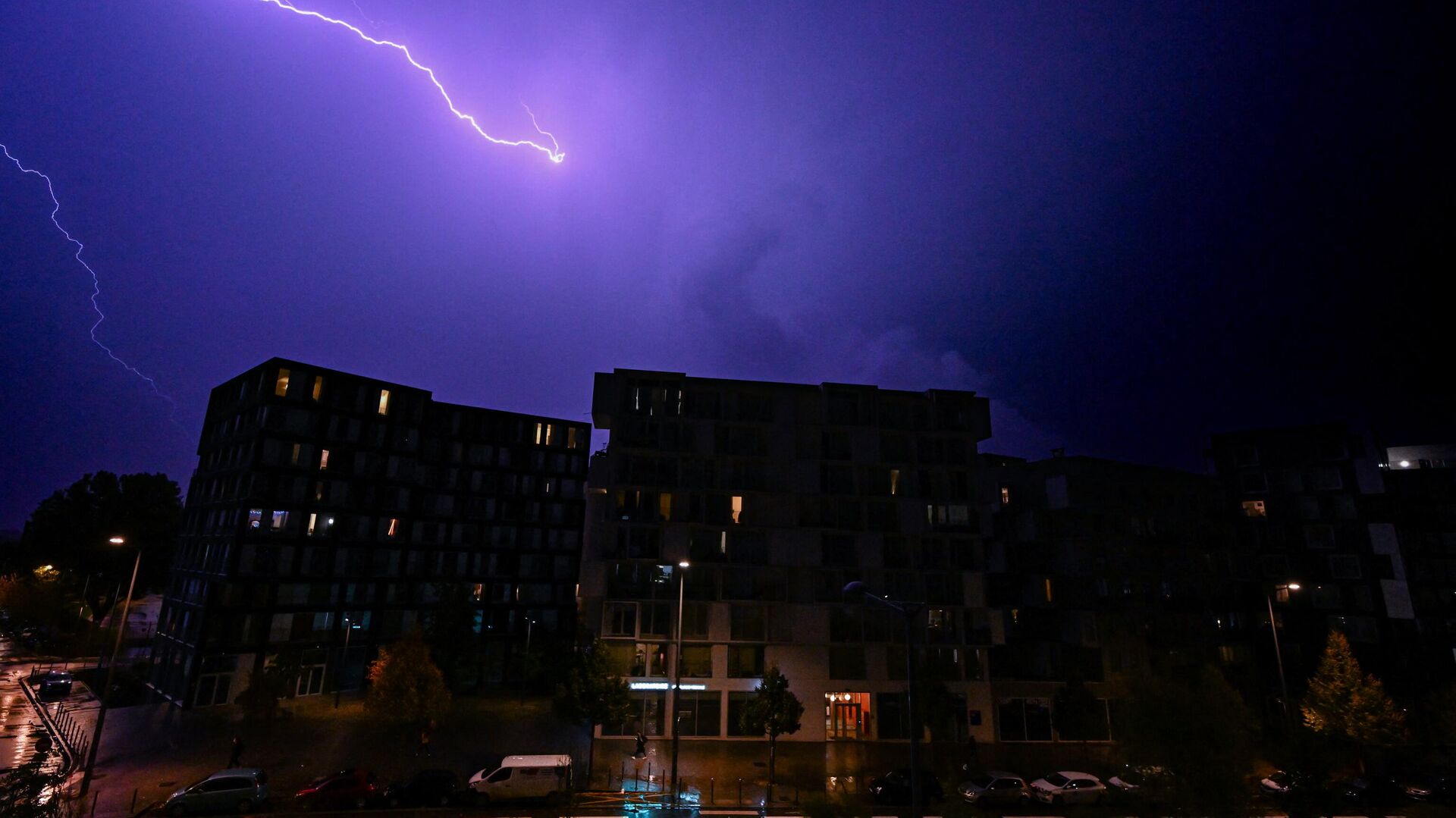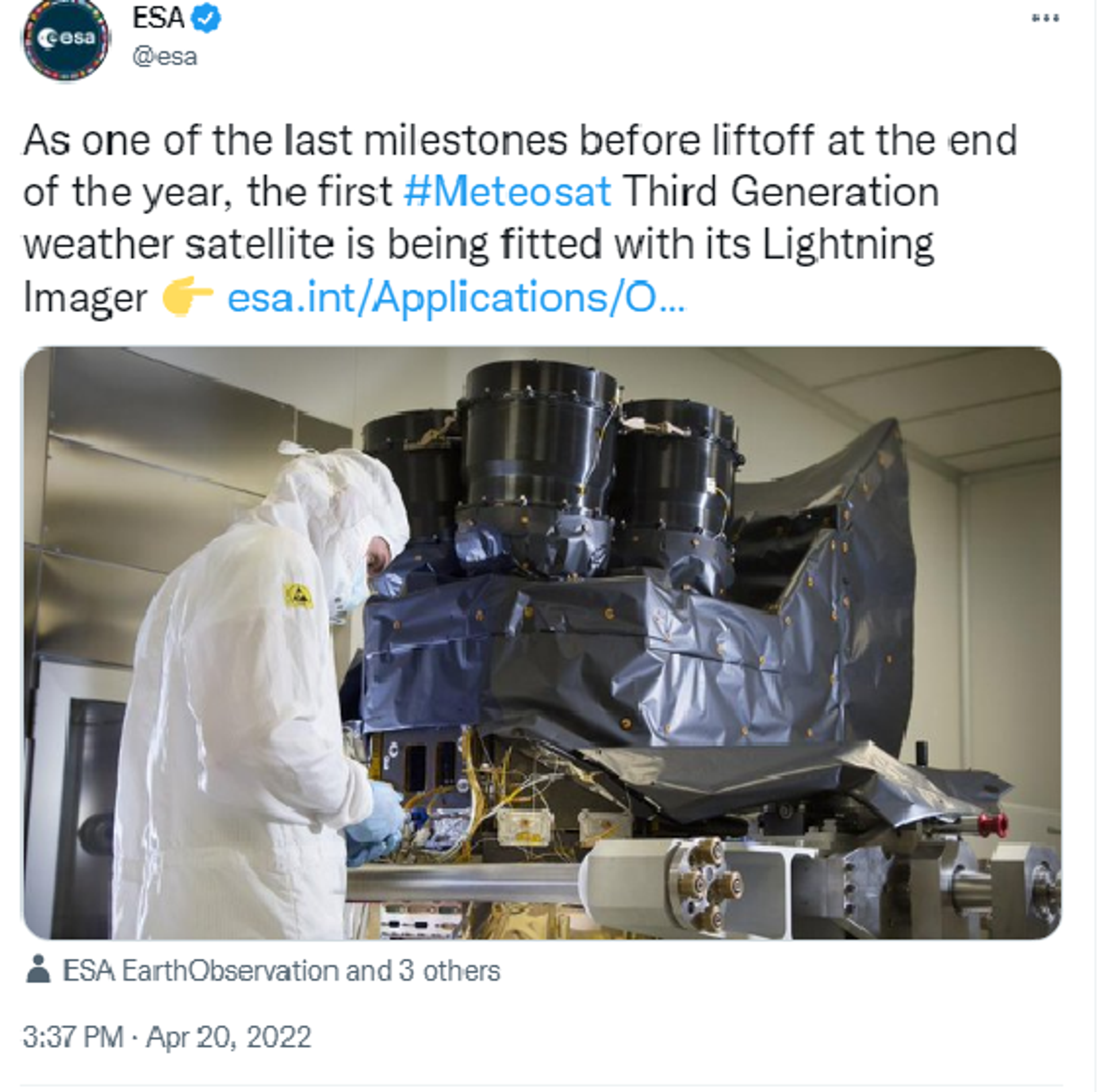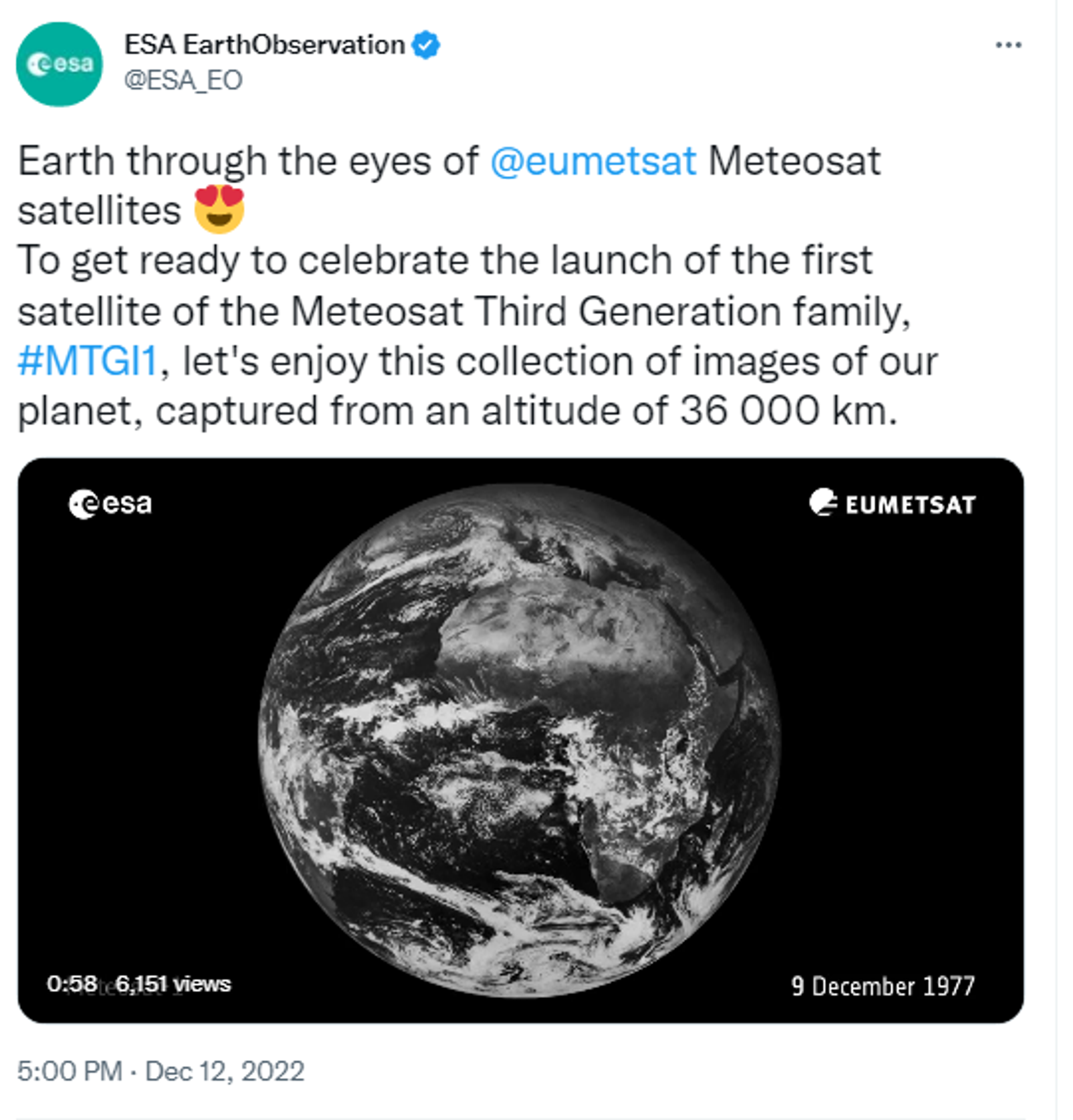https://sputnikglobe.com/20221213/hunt-for-lightning-new-european-satellite-tasked-with-boosting-storm-prediction-1105421640.html
Hunt For Lightning: New European Satellite Tasked With Boosting Storm Prediction
Hunt For Lightning: New European Satellite Tasked With Boosting Storm Prediction
Sputnik International
New European satellite is to enhanse violent storm prediction.
2022-12-13T14:38+0000
2022-12-13T14:38+0000
2023-04-21T10:42+0000
science & tech
europe
satellite
weather
european space agency (esa)
storm
https://cdn1.img.sputnikglobe.com/img/07e6/0c/0d/1105419219_0:161:3071:1888_1920x0_80_0_0_259079d8bb4a76c1858bb4c9c76339ba.jpg
Meteorologists are anticipating breakthrough developments as the trailblazer in a triad of new, third-generation European satellites is expected to help predict violent weather, such as thunderstorms and lightning.Meteosat-12, or the Meteosat Third Generation first imager satellite (MTG-I1), is tailored to provide regular high-resolution images of fast developing weather.The satellite is fitted with two key instruments on board:Two of the new satellites will send images of Earth’s weather systems utilizing the innovative lightning imager, along with "lightning data" used for short-range storm forecasting. The inclusion of a camera to detect lightning has been hailed as a "game changer" in efforts to be one step ahead of imminent, hazardous weather. The third - a sounding satellite - will use infrared to provide three-dimensional profiles of the atmosphere. Armed with the new data from the MTG systems, meteorological services will be able to offer forecasting up to two hours ahead of a weather "event"- something that has been dubbed "nowcasting.”According to Phil Evans, the director general of Eumetsat, more accurate observations from space are crucial for better forecasting, allowing to "reduce and mitigate the impacts of severe weather events."Currently, the company Eumetsat operates Meteosat-9, -10 and -11, launched by the European Space Agency (ESA), in geostationary orbit over Europe and Africa, and the Indian Ocean.
https://sputnikglobe.com/20221204/too-bright-and-not-a-star-how-huge-satellite-spoils-space-observations-1105032843.html
Sputnik International
feedback@sputniknews.com
+74956456601
MIA „Rossiya Segodnya“
2022
News
en_EN
Sputnik International
feedback@sputniknews.com
+74956456601
MIA „Rossiya Segodnya“
Sputnik International
feedback@sputniknews.com
+74956456601
MIA „Rossiya Segodnya“
new european satellite, to enhanse violent storm prediction.
new european satellite, to enhanse violent storm prediction.
Hunt For Lightning: New European Satellite Tasked With Boosting Storm Prediction
14:38 GMT 13.12.2022 (Updated: 10:42 GMT 21.04.2023) After full deployment, scheduled to be completed in 2026, the Meteosat Third Generation (MTG) system will boast three satellites in geostationary orbit perched at 36,000km above the equator over Africa, offering up images of Europe every two and a half minutes, including observations of lightning from space.
Meteorologists are anticipating breakthrough developments as the trailblazer in a triad of new, third-generation European satellites is expected to help predict violent weather, such as
thunderstorms and lightning.
Meteosat-12, or the Meteosat Third Generation first imager satellite (MTG-I1), is tailored to provide regular high-resolution images of fast developing weather.
The satellite is fitted with two key instruments on board:
Flexible Combined Imager with 16 spectral bands, operating at a spatial resolution of between 1 and 2 km.
Lightning Imager to enable continuous monitoring of 80 percent of the planet for lightning, enabling earlier detection of storms.
Two of the new satellites will send images of Earth’s weather systems utilizing the innovative lightning imager, along with "lightning data" used for short-range storm forecasting. The inclusion of a camera to detect lightning has been hailed as a "game changer" in efforts to be one step ahead of imminent, hazardous weather.
The third - a sounding satellite - will use infrared to provide three-dimensional profiles of the atmosphere. Armed with the new data from the MTG systems, meteorological services will be able to offer forecasting up to two hours ahead of a weather "event"- something that has been dubbed "nowcasting.”
According to Phil Evans, the director general of Eumetsat, more accurate observations from space are crucial for better forecasting, allowing to "reduce and mitigate the impacts of severe weather events."
Currently, the company Eumetsat operates Meteosat-9, -10 and -11, launched by the European Space Agency (ESA), in geostationary orbit over Europe and Africa, and the Indian Ocean.

4 December 2022, 15:12 GMT




